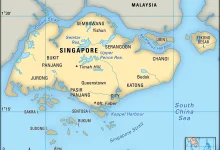The Geographical and Demographic Landscape of Syria
Syria, officially known as the Syrian Arab Republic, is a nation located in the western part of Asia. Bordered by Turkey to the north, Iraq to the east, Jordan to the south, and Israel and Lebanon to the southwest, Syria’s geographic positioning has historically rendered it a pivotal region in terms of trade, culture, and geopolitics.
Geographic Overview
Syria covers an area of approximately 185,180 square kilometers (about 71,500 square miles), making it one of the smaller countries in the Middle East. The geography of Syria is diverse, consisting of mountains, plains, deserts, and coastal areas along the Mediterranean Sea. The western part of the country features the Alawite Mountains, which are home to the Alawite community, an influential sect within Syria.
The plains of the Euphrates River, which flows through the eastern part of the country, are among the most fertile regions in Syria, supporting agriculture that includes crops like wheat, barley, and cotton. The country’s coastal area, characterized by a Mediterranean climate, is essential for its fishing industry and tourism.
Historical Context
The history of Syria is deeply intertwined with various civilizations that have inhabited the region, including the Phoenicians, Romans, Byzantines, and Ottomans. These historical layers have significantly influenced the cultural and religious tapestry of the nation. The capital city, Damascus, is one of the oldest continuously inhabited cities in the world, showcasing a blend of ancient history and modernity.
The discovery of oil in the mid-20th century transformed Syria’s economy, bringing in revenue and prompting industrial growth. However, the country faced significant challenges, including political instability, authoritarian governance, and socio-economic issues that have culminated in the ongoing civil conflict that began in 2011.
Demographic Profile
Syria’s population is estimated to be around 18 million people, although accurate figures are challenging to ascertain due to the civil war and resulting displacement. Prior to the conflict, the country’s population was characterized by ethnic and religious diversity, with Arab Muslims constituting the majority. Minority groups include Kurds, Christians, Druze, and various sects of Islam such as Alawites and Sunni Muslims.
The demographic structure of Syria has been profoundly affected by the ongoing conflict. Millions have been displaced internally, while others have sought refuge in neighboring countries and beyond. This mass exodus has led to significant changes in the demographic landscape, with some areas experiencing dramatic population declines, while others have seen an influx of refugees.
Current Challenges and Prospects
The civil war has not only caused immense human suffering but has also decimated infrastructure, disrupted education, and crippled the economy. The World Bank estimates that the economic output of Syria has contracted by over 60% since the onset of the war, leading to widespread poverty and unemployment. Access to basic services such as healthcare, sanitation, and education has diminished, posing long-term challenges for recovery and development.
The aftermath of the conflict presents both challenges and opportunities for reconstruction. As international stakeholders and local communities seek pathways for rebuilding, a focus on inclusive governance, economic revitalization, and reconciliation will be essential. The international community’s role in facilitating humanitarian assistance and supporting sustainable development initiatives will be crucial in shaping Syria’s future.
Conclusion
Syria stands at a crossroads in its history, grappling with the remnants of a devastating conflict while striving for a more stable and prosperous future. The nation’s rich cultural heritage and strategic location offer potential for growth and development, provided that peace and stability can be restored. Understanding the geographic and demographic dimensions of Syria is fundamental for comprehending the complexities of its current situation and the possibilities for its future trajectory. As the nation continues to navigate these challenges, the resilience of its people remains a beacon of hope for recovery and renewal.
This exploration of Syria’s geography and demographics highlights the multifaceted issues facing the country today. Continued attention to these factors will be critical as Syria seeks to rebuild and redefine its place in the region and the world.

